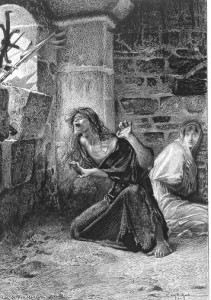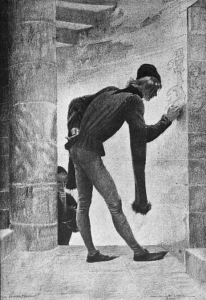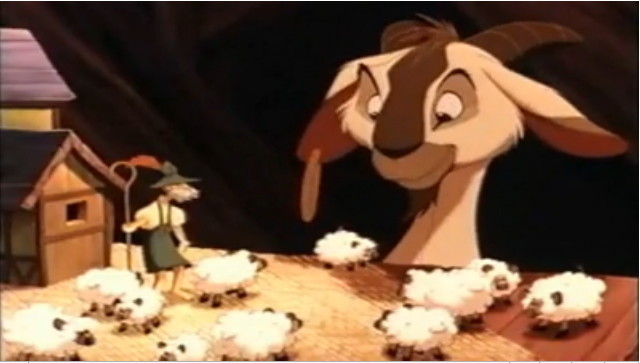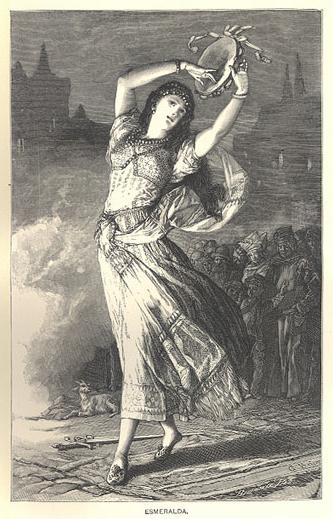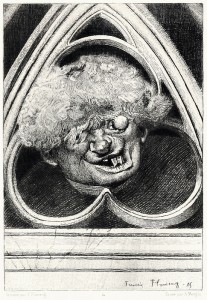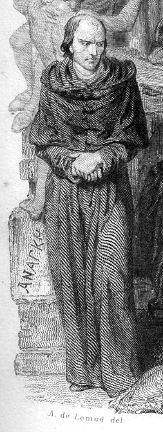
Lemud Illustration of Frollo
Claude Frollo seems to have a very tricky name to break down. Let’s start with the easy part, Claude.
Claude is a Latin name that means Lame, as in limp. This name could relate to Frollo’s crippled soul. In Book 4 Chapter 6, the local boys also said to Frollo and Quasimodo when they would pass by “Claudius cum claudo” meaning in Latin “Claude with the crippled.”
Then there is Frollo. Frollo is a mysterious surname. It doesn’t sound very French at all does it? Well, it’s not, in fact it’s not really a surname. Frollo has Roman roots but isn’t really Roman. The only evidence of Frollo aside from Hugo’s Frollo and Leone Frollo (an Italian Comic Stripe Creator) is in the Arthurian Legends.
According to the Legend, Arthur conquered Norway for with Brother-in-law, King Lot. On his was back he went through Denmark and to Gaul. Gaul was ruled by the Roman Emperor Leo and it was governed by Frollo. Arthur defeated the army and Frollo fled to Paris. Arthur besieged the city. Frollo knew the city couldn’t hold out a long siege, so he challenged Arthur to one-on-one combat for Gaul. Frollo managed to wound Arthur but was killed. The Legends claim that Frollo means in Old English “Killed by Arthur.” Which would mean he got the name after the fact and it would make it an Old English name.
But wait there’s more, according to the Vulgate Lancelot, a major source for the Arthurian Legend written in French, Frollo was an ally of King Claudas. Yet another connection to the name Claude.


